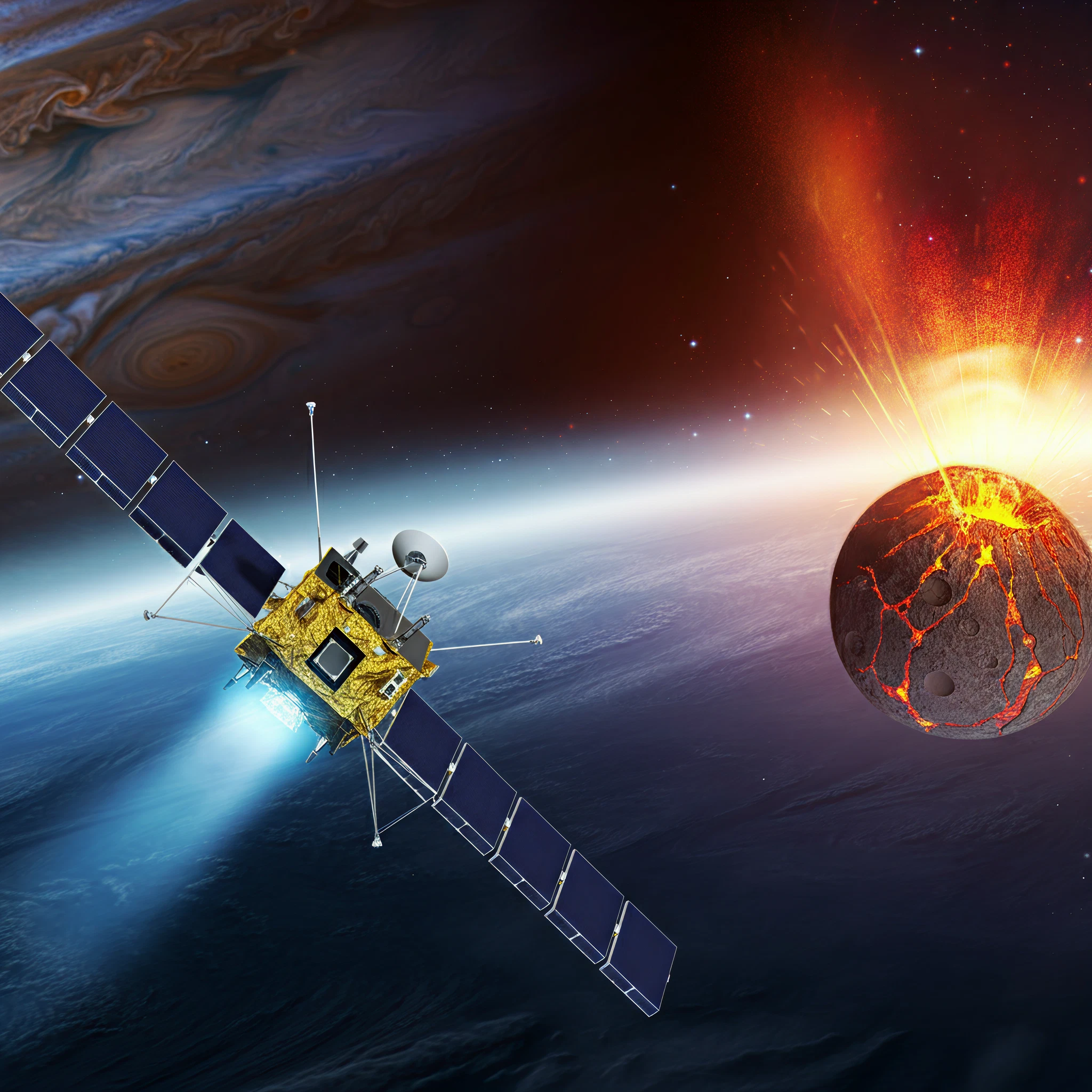NASA’s Juno mission has always been at the forefront of space exploration, and it continues to amaze with groundbreaking discoveries. New data from this ambitious mission is shedding light on the inner workings of Jupiter and its volcanic moon, Io. Researchers are not just uncovering secrets of these celestial giants but are also rewriting what we understand about extreme planetary environments and their dynamic activities.
Juno’s Groundbreaking Mission
Launched in 2011, NASA’s Juno spacecraft was designed to peer beneath the dense clouds of Jupiter and unlock the mysteries of the solar system’s largest planet. With its extended mission, Juno has also begun studying the enigmatic Io, famously known as the most volcanic body in our solar system.
The detailed findings from Juno’s instruments, like the JunoCam, the Microwave Radiometer (MWR), and the Jovian Infrared Auroral Mapper (JIRAM), are delivering incredible insights. From revealing Jupiter’s atmospheric structure to exposing molten magma beneath Io’s crust, Juno is delivering scientific discoveries beyond expectations.
Unveiling Jupiter’s Atmosphere
Juno is revolutionizing our understanding of Jupiter’s atmosphere, particularly near its north pole. Through radio occultation experiments, which involve transmitting and measuring radio signals as they pass through Jupiter’s atmosphere, researchers have discovered remarkable insights:
- The stratospheric polar cap of Jupiter’s north pole is 11°C cooler than its surroundings, with winds reaching speeds over 100 mph.
- The team has observed the enduring cyclonic features surrounding Jupiter’s poles. These swirling polar storms, larger than Australia, are confined to the region, defying comparison to Earth’s hurricanes and exhibiting unique dynamics.
The cyclones behave like “bouncing springs,” displaying motions stabilized by a process known as “beta drift.” This unique atmospheric dynamic explains how Jupiter sustains its massive storms, which remain stable and active for years.
Io’s Fiery Secrets
Io has captured the imagination of astronomers for years, and Juno’s data is taking our understanding to the next level. Using the MWR and JIRAM instruments, the Juno team has explored Io’s volcanic activity and its subsurface heat transfer system.
Here’s what they’ve found:
- Molten Interior: Beneath Io’s crust lies molten magma that persists in cooling lava flows, making up about 10% of the moon’s surface. This heat transfer is likened to a “lunar radiator” efficiently channeling interior heat to the surface.
- Volcanic Eruptions: The most energetic eruption in Io’s documented history, first identified on December 27, 2024, remains active. Lava and ash continued spewing as recently as March 2, 2025, and Juno is set to observe more activity in its upcoming flyby.
These findings are illuminating how Io manages to renew its surface rapidly and sustain its geological activity despite its harsh environment.
Why These Discoveries Matter
Juno’s mission is more than just uncovering the secrets of Jupiter and Io. Its discoveries provide valuable insights into the physics of extreme environments, offering parallels to processes that might occur on other planets.
- Jupiter’s Dynamic System sheds light on how massive gas planets function, with implications for exoplanet research.
- Io’s Volcanic Activity showcases how geological processes can sustain heat transfer in seemingly inhospitable conditions, providing clues for studying other celestial bodies, including Europa and Enceladus.
What’s Next for Juno?
Juno’s extended mission will take it even closer to Jupiter and Io, navigating the intense radiation belts and delivering more groundbreaking data. The upcoming May 6, 2025, flyby of Io promises to uncover even more volcanic activity, further solidifying Juno’s role as one of NASA’s most prolific missions.
Join the Journey of Discovery
Juno continues to push the boundaries of what we know about our universe. Its discoveries are a testament to human curiosity and engineering innovation. Stay tuned for more updates as Juno’s extended mission explores uncharted territories of Jupiter and its extraordinary moon, Io.
Want to know more? Visit NASA’s dedicated Juno mission page and keep exploring the frontiers of space.








